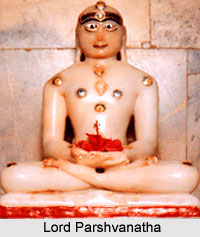 Shri Prahladanapura Teerth located Gujarat is a Jain pilgrimage centre. The shrine built here is known as Prahlavia Parshvanatha temple and it is dedicated to Lord Parshvanatha, the twenty-third Jain Tirthankara.
Shri Prahladanapura Teerth located Gujarat is a Jain pilgrimage centre. The shrine built here is known as Prahlavia Parshvanatha temple and it is dedicated to Lord Parshvanatha, the twenty-third Jain Tirthankara.
History of Shri Prahladanapura Teerth
According to history Shri Prahladanapura Teerth dates back to the ancient times. The town of Prahladanapura was built by Prahladana, the brother of Dharavarsha of the Paramar dynasty in the first half of the thirteenth century of the Vikrama Samvat Era. The town is now known as Palanpur. As the King Prahladana gained powers he began showing disrespect towards the divine powers. As a result he was severely punished and was inflicted with white leprosy. Understanding his mistakes the king began repenting for his misbehaviour. One day a famous Acharya Shalibhadrasuri approached him and consoled him. He imparted several religious sermons that impressed the king and he embraced the Jain religion. The Acharya then advised him to construct a temple and install the deity of Lord Parshvanatha. He also instructed the king to bath the idol and then apply that holy water on his own body. The king followed the instructions and as a result he was freed from his disease. The temple of Prahladana Parshvanatha can still be seen today. Later the temple was repaired and reconstructed. The idol was re-installed at the auspicious hands of Acharya Kakkasurishvaraji of the Koranta Gaccha. The temple is now known as Prahlavia Parshvanatha temple. Palanpur also serves as the birth-place of the renowned Acharya Shri Somasundarasurishvaraji and of Acharya Shri Hiravijayasurishvaraji. The later had delivered sermons to King Akbar of the Mughal Dynasty.
Temple of Shri Prahladanapura Teerth
The Temple of Shri Prahladanapura Teerth houses the idol of Shri Prahlavia Parshvanatha. The temple has been magnificently decorated with intricate artistic designs. It stands as a unique example of ancient architectural beauty. It is three storied building and is spread over a vast area. The idol of the temple is white in colour and is about 45 cm in height. It is seated in a padmasana posture. The temple with its three storeys is wide and also majestic. In its Bhamati an idol of Godi Parshvanatha has been installed. Apart from this there are other idols of Lord Shantinath and Lord Shitalnath located on the upper storey of the temple.
The Temple of Shri Prahladanapura Teerth organises many annual gatherings and functions. There are provisions for dharamshalas or rest houses for the pilgrims. These are well equipped with all modern facilities. The temple is surrounded by scenic beauty that attracts and mesmerises the pilgrims. The calm and tranquil environment makes it a suitable place for religious activities. The kshetra is well connected to road, rail and air.




















